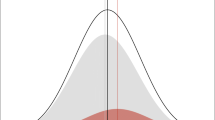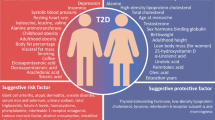Abstract
We aimed, first, to investigate the minor allele frequencies (MAFs) of single nucleotide polymorphisms (SNPs) associated with serum uric acid (SUA) level in the Korean population and compare these with data from other ethnic groups and, second, to investigate whether the SNPs are associated with altered SUA levels. We examined the frequencies of risk alleles, investigated the MAFs of 40 previously described SNPs associated with SUA level in the Korean population (a total of 1,957 subjects), and compared results with data for other ethnic groups. We also analyzed associations with SUA concentrations based on data from genome-wide association studies in the Korean population (a total of 402 rheumatoid arthritis subjects) and tested whether polymorphism of any of the 40 SNPs associated with SUA identified previously was associated with SUA levels. The MAFs of SNPs associated with SUA level in the Korean population were quite similar to those among Japanese, but not in populations of European descent. SNP rs12734001 (PPP1R12B) proved to have the most probable association with SUA concentrations (P_trend = 2.29 × 10−9). We also analyzed 13 SNPs shown previously by meta-analysis to be associated with SUA, and SNP rs3741414 (INHBC) was found to have probable association with SUA level observed in the present study (P_trend = 0.01). The pattern of variants controlling SUA levels in the Korean population is not similar to that in European population. SNP rs12734001 (PPP1R12B) is significantly associated with SUA level among Koreans.

Similar content being viewed by others
References
Choi HK, Mount DB, Reginato AM (2005) Pathogenesis of gout. Ann Intern Med 143:499–516
Agudelo CA, Wise CM (2001) Gout: diagnosis, pathogenesis, and clinical manifestations. Curr Opin Rheumatol 13:234–239
Yang Q, Köttgen A, Dehghan A, Smith AV, Glazer NL, Chen MH et al (2010) Multiple genetic loci influence serum urate levels and their relationship with gout and cardiovascular disease risk factors. Circ Cardiovasc Genet 3:523–530
Zhu Y, Pandya BJ, Choi HK (2011) Prevalence of gout and hyperuricemia in the US general population: the National Health and Nutrition Examination Survey 2007–2008. Arthritis Rheum 63:3136–3141
Lee CH, Sung NY (2011) The prevalence and features of Korean gout patients using the National Health Insurance Corporation database. J Rheum Dis 18:94–100
Anzai N, Jutabha P, Amonpatumrat-Takahashi S, Sakurai H (2012) Recent advances in renal urate transport: characterization of candidate transporters indicated by genome-wide association studies. Clin Exp Nephrol 16:89–95
Reginato AM, Mount DB, Yang I, Choi HK (2012) The genetics of hyperuricemia and gout. Nat Rev Rheumatol 8:610–621
Köttgen A, Albrecht E, Teumer A, Vitart V, Krumsiek J, Hundertmark C et al (2013) Genome-wide association analyses identify 18 new loci associated with serum urate concentrations. Nat Genet 45:145–154
Kolz M, Johnson T, Sanna S, Teumer A, Vitart V, Perola M et al (2013) Meta-analysis of 28,141 individuals identifies common variants within five new loci that influence uric acid concentrations. PLoS Genet 5:e1000504
Lee YH, Song GG (2012) Pathway analysis of genome-wide association studies on uric acid concentrations. Hum Immunol 73:805–810
Woodward OM, Köttgen A, Coresh J, Boerwinkle E, Guggino WB, Köttgen M (2009) Identification of a urate transporter, ABCG2, with a common functional polymorphism causing gout. Proc Natl Acad Sci USA 23(106):10338–10342
Matsuo H, Takada T, Ichida K, Nakayama A, Takada Y, Okada C et al (2011) Identification of ABCG2 dysfunction as a major factor contributing to gout. Nucleosides, Nucleotides Nucleic Acids 30:1098–1104
Sull JW, Park EJ, Lee M, Jee SH (2013) Effects of SLC2A9 variants on uric acid levels in a Korean population. Rheumatol Int 33:19–23
Cho YS, Go MJ, Kim YJ, Heo JY, Oh JH, Ban JH et al (2009) A large-scale genome-wide Association study of Asian populations uncovers genetic factors influencing eight quantitative traits. Nat Genet 41:527–534
Shin J, Kim Y, Kong M, Lee C (2012) Genetic architecture for susceptibility to gout in the KARE cohort study. J Hum Genet 57:379–384
Freudenberg J, Lee HS, Han BG, Shin HD, Kang YM, Sung YK et al (2011) Genome-wide association study of rheumatoid arthritis in Koreans: population-specific loci as well as overlap with European susceptibility loci. Arthritis Rheum 63:884–893
Lee HS, Kim TH, Bang SY, Na Yj, Kim I, Kim KW et al (2013) Ethnic specificity of lupus-associated loci identified in a genome-wide association study in Korean women. Ann Rheum Dis (Epub ahead of print)
Bae SC (2010) Epidemiology and etiology of rheumatoid arthritis. J Korean Med Assoc 53:843–852
Kim YJ, Choi CB, Sung YK, Lee H, Bae SC (2009) Characteristics of Korean patients with RA: a single center cohort study. J Korean Rheum Assoc 16:204–212
Arnett FC, Edworthy SM, Bloch DA, McShane DJ, Fries JF, Cooper NS et al (1988) The American Rheumatism Association 1987 revised criteria for the classification of rheumatoid arthritis. Arthritis Rheum 31:315–324
Hochberg MC (1997) Updating the American College of Rheumatology revised criteria for the classification of systemic lupus erythematosus. Arthritis Rheum 40:1725
Takeuchi F, Yamamoto K, Isono M, Katsuya T, Akiyama K, Ohnaka K et al (2013) Genetic impact on uric acid concentration and hyperuricemia in the Japanese population. J Atheroscler Thromb 20:351–367
Purcell S, Neale B, Todd-Brown K, Thomas L, Ferreira MA, Bender D et al (2007) PLINK: a tool set for whole-genome association and population-based linkage analyses. Am J Hum Genet 81:559–575
Yamanaka H, Japanese Society of Gout and Nucleic Acid Metabolism (2011) Japanese guideline for the management of hyperuricemia and gout: second edition. Nucleosides, Nucleotides Nucleic Acids 30:1018–1029
Pe’er I, Yelensky R, Altshulser D, Daly MJ (2008) Estimation of the multiple testing burden for genomewide association studies of nearly all common variants. Genet Epidemiol 32:381–385
Merriman TR (2011) Population heterogeneity in the genetic control of serum urate. Semin Nephrol 31:420–425
Jung J, Kang H, Cho YS, Oh JH, Ryu MH, Chung HW et al (2010) Gene flow between the Korean peninsula and its neighboring countries. PLoS ONE 5:e11185
Jang WC, Nam YH, Park SM, Ahn YC, Park SH, Choe JY et al (2008) T6092C polymorphism of SLC22A12 gene is associated with serum uric acid concentrations in Korean male subjects. Clin Chim Acta 398:140–144
Jang WC, Nam YH, Ahn YC, Park SM, Yoon IK, Choe JY et al (2012) G109T polymorphism of SLC22A12 gene is associated with serum uric acid level, but not with metabolic syndrome. Rheumatol Int 32:2257–2263
Rho YH, Choi SJ, Lee YH, Ji JD, Song GG (2007) The association between hyperuricemia and the Trp64Arg polymorphism of the beta-3 adrenergic receptor. Rheumatol Int 27:835–839
Hong YS, Lee MJ, Kim KH, Lee SH, Lee YH, Kim BG et al (2004) The C677 mutation in methylene tetrahydrofolate reductase gene: correlation with uric acid and cardiovascular risk factors in elderly Korean men. J Korean Med Sci 19:209–213
Freidin MB, Polonikov AV (2013) Validation of PPP1R12B as a candidate gene for childhood asthma in Russians. J Genet 92:93–96
Pham K, Langlais P, Zhang X, Chao A, Zingsheim M, Yi Z (2012) Insulin-stimulated phosphorylation of protein phosphatase 1 regulatory subunit 12B revealed by HPLC-ESI-MS/MS. Proteome Sci 10:52
Okamoto R, Kato T, Mizoguchi A, Takahashi N, Nakakuki T, Mizutani H et al (2006) Characterization and function of MYPT2, a target subunit of myosin phosphatase in heart. Cell Signal 18:1408–1416
Chasman DI, Fuchsberger C, Pattaro C, Teumer A, Böger CA, Endlich K et al (2012) Integration of genome-wide association studies with biological knowledge identifies six novel genes related to kidney function. Hum Mol Genet 21:5329–5343
Conflict of interest
The authors have no conflicts of interest to disclose.
Author information
Authors and Affiliations
Corresponding author
Rights and permissions
About this article
Cite this article
Son, CN., Bang, SY., Cho, SK. et al. The frequency of single nucleotide polymorphisms and their association with uric acid concentration based on data from genome-wide association studies in the Korean population. Rheumatol Int 34, 777–783 (2014). https://doi.org/10.1007/s00296-013-2939-1
Received:
Accepted:
Published:
Issue Date:
DOI: https://doi.org/10.1007/s00296-013-2939-1




